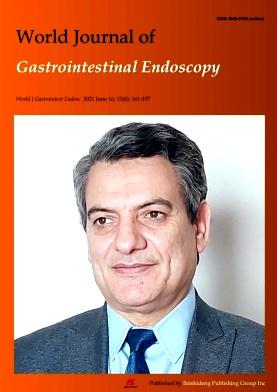Disparities in esophageal cancer incidence and esophageal adenocarcinoma mortality in the United States over the last 25-40 years
IF 1.4
Q4 GASTROENTEROLOGY & HEPATOLOGY
引用次数: 0
Abstract
BACKGROUND Esophageal carcinoma presents as 2 types, esophageal adenocarcinoma (EAC) and esophageal squamous cell carcinoma (ESCC) with the frequency of both changing in the United States (US). AIM To investigate EAC/ESCC incidence time trends among the 3 main US racial groups and investigate trends in US EAC survival by ethnicity. METHODS Twenty-five years (1992-2016) of data from SEER 13 program was analyzed to compare incidence trends in EAC and ESCC between non-Hispanic whites (nHW), non-Hispanic Blacks (nHB) and Hispanics (Hisp) using SEERStat® . In addition, SEER 18 data, from 1975-2015, on EAC in the US was analyzed to evaluate racial disparities in incidence and survival using SEERStat® and Ederer II method. RESULTS In the 3 major US ethnic groups, age-adjusted incidence of ESCC has declined while EAC has continued to rise from 1992-2016. Of note, in Hisp, the EAC incidence rate increased while ESCC decreased from 1992 to 2016, resulting in EAC as the predominant esophageal cancer subtype in this group since 2011, joining nHW. Furthermore, although ESCC remains the predominant tumor in nHB, the difference between ESCC and EAC has narrowed dramatically over 25 years. EAC survival probabilities were worse in all minority groups compared to nHw. CONCLUSION Hisp have joined nHW as US ethnic groups more likely to have EAC than ESCC. Of note, EAC incidence in nHB is increasing at the highest rate nationally. Despite lower EAC incidence in all minority groups compared to nHW, these populations have decreased survival compared to nHW.过去 25-40 年间美国食管癌发病率和食管腺癌死亡率的差距
背景食管癌有两种类型,即食管腺癌(EAC)和食管鳞状细胞癌(ESCC),这两种癌症在美国的发病率在不断变化。目的 调查美国 3 个主要种族群体中 EAC/ESCC 发病率的时间趋势,并按种族调查美国 EAC 存活率的趋势。方法 使用 SEERStat® 分析 SEER 13 计划的 25 年(1992-2016 年)数据,比较非西班牙裔白人(nHW)、非西班牙裔黑人(nHB)和西班牙裔美国人(Hisp)的 EAC 和 ESCC 发病率趋势。此外,还分析了 1975-2015 年美国 EAC 的 SEER 18 数据,使用 SEERStat® 和 Ederer II 方法评估发病率和存活率的种族差异。结果 在美国的 3 个主要种族群体中,1992-2016 年期间,经年龄调整的 ESCC 发病率有所下降,而 EAC 发病率则持续上升。值得注意的是,从 1992 年到 2016 年,在盱眙人中,EAC 发病率上升,而 ESCC 发病率下降,导致自 2011 年以来,EAC 成为该群体中最主要的食管癌亚型,加入了 nHW 的行列。此外,尽管 ESCC 仍是 nHB 中的主要肿瘤,但 25 年来 ESCC 和 EAC 之间的差异已显著缩小。与 nHw 相比,所有少数民族群体的 EAC 生存概率都更低。结论 与非裔美国人一样,盱眙人也是更有可能患 EAC 而非 ESCC 的美国少数族裔群体。值得注意的是,黑种人的EAC发病率正在以全国最高的速度增长。尽管所有少数民族群体的 EAC 发病率均低于非华裔,但这些人群的存活率却低于非华裔。
本文章由计算机程序翻译,如有差异,请以英文原文为准。
求助全文
约1分钟内获得全文
求助全文

 求助内容:
求助内容: 应助结果提醒方式:
应助结果提醒方式:


